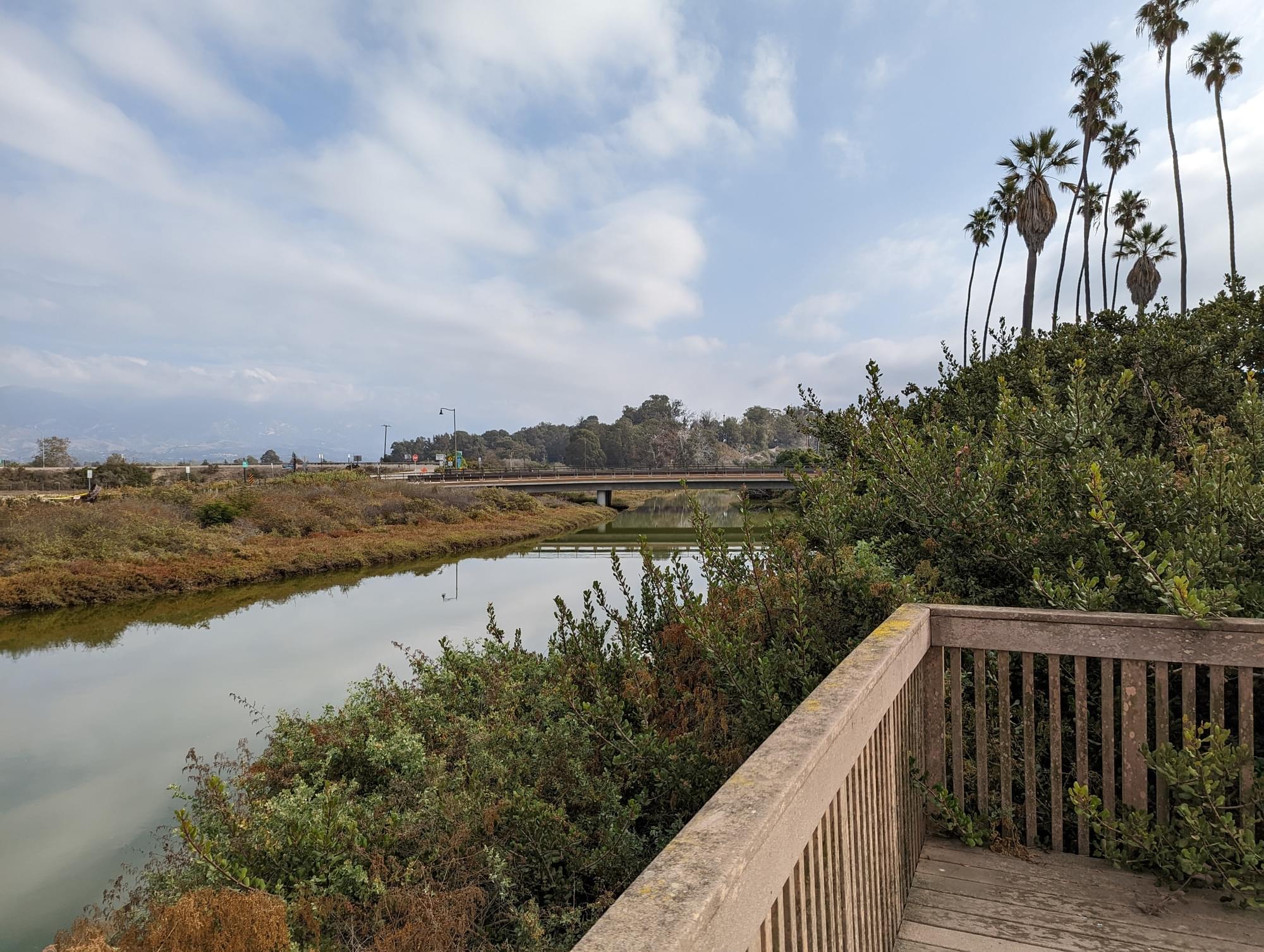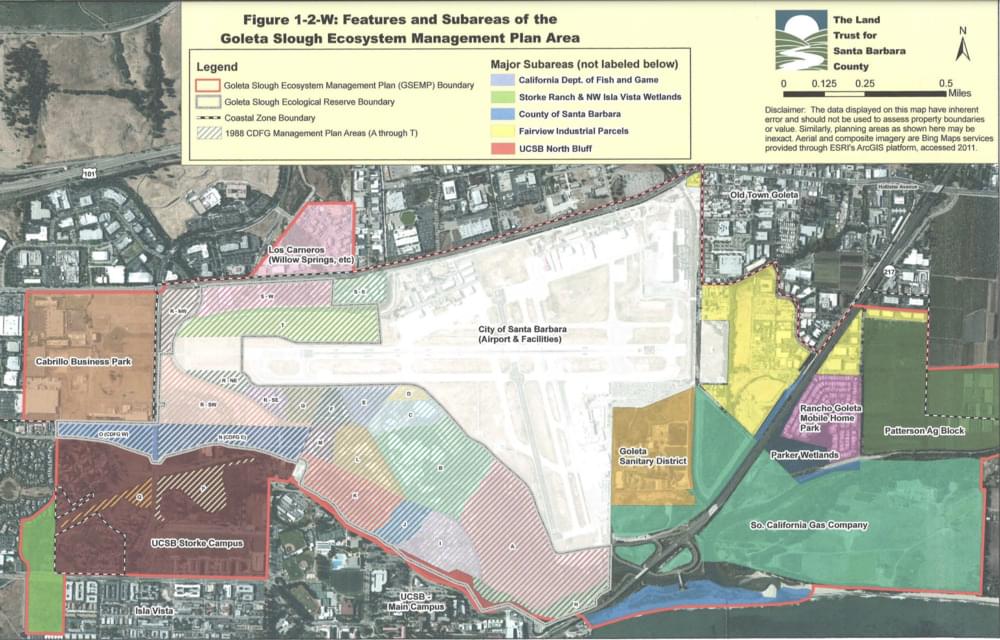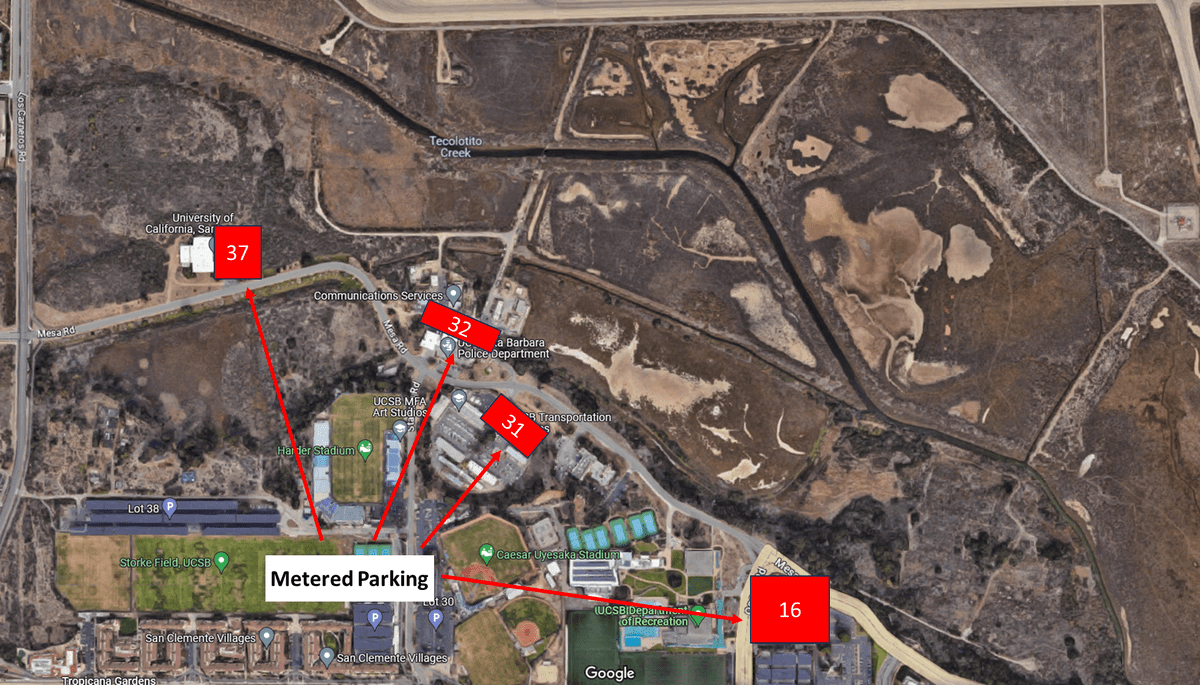Goleta Beach County Park (including east end of Goleta Slough)

Goleta Beach County Park (including east end of Goleta Slough)
Goleta, California 93117
County Parks WebsiteGoleta History
Wikipedia
Goleta Slough Management Committee
Tips for Birding
Check beaches for shorebirds and interesting gulls. Search Goleta Slough for ducks, herons, and other waterbirds. The mouth of the slough (which is usually closed by a sand berm) often has shorebirds resting or feeding.
Birds of Interest
Yellow-crowned Night-Heron; nesting Great Blue Heron, Great Egret, and Double-crested Cormorant. Shorebirds, gulls, and Surf Scoters.
About this Location
Goleta Beach is a Santa Barbara County public park. It features sandy beaches (uncombed, with beach rack for birds), an estuary, pickleweed marsh, coyotebrush (Baccharis piluaris) and lemonadeberry (Rhus integrifolia) shrubland, and non-native trees like Brazilian pepper (Schinus terebinthifolia) and blue gum eucalyptus (Eucalyptus globulus) which are often used by migratory or wintering songbirds.
This park is a stronghold for Yellow-crowned Night-Herons, which have recently begun expanding into the county. They are most often seen in trees bordering the channel just north of the park.
Goleta Pier extends 400 m out into the ocean and provides seawatching views. A Peregrine Falcon often terrorizes pigeons that roost on the pier.
Tables throughout the park are reservable for picnics or grilling parties. The park can be busy at peak hours - the afternoon on weekends.
Goleta Beach is open every day from 8 am - sunset with lots of free parking. The park is also serviced by buses and a scenic coastal bike trail which passes through Goleta Slough and connects it to UCSB and the City of Goleta.
About Goleta Slough Ecological Reserve
See all hotspots at Goleta Slough Ecological Reserve
What is today Goleta Slough was once a large bay surrounded by a dense population of Chumash Native Americans. The water reached past today's Hollister Avenue and when the water level was high, the bay connected with Devereux Slough, making what is now the UCSB Campus an island. In 1862, torrential rains eroded the hillsides and vast amounts of silt were deposited into the bay, turning it into the shallow marsh it is today. In 1928, part of the slough was filled in to create an airstrip, which was expanded into a full-size airport starting in 1941. During World Was II and for some time after, this served as a military air base. Other parts of the slough were also filled in to create space for development such as the Goleta Sanitary District wastewater plant.
Today, only about one-third of the original wetland area remains. In 1986, Goleta Slough was declared an Ecological Reserve, managed by the California Department of Fish and Wildlife. In 2007, the adjoining Goleta Slough Marine Conservation Area was added; this includes the area below the mean high tide in the slough and Atascadero Creek.
The slough empties into the ocean at Goleta Beach County Park. A sandbar sometimes blocks the flow of water, but this is either flushed out naturally during heavy rains or breached mechanically so as to avoid water levels rising too high in the slough.
The vegetation in the slough is dominated by pickleweed, but also includes alkali-heath, salt grass, salt bush, ditch-grass, pondweed, tule, and cattails, as well as shrubs like willows and coyote brush and trees like Coast Live Oak.
Features
Restrooms on site
Entrance fee
Roadside viewing
Content from Goleta History, Wikipedia, Goleta Slough Management Committee, and Linus Blomqvist
 Goleta Slough
Goleta SloughGoleta Slough Management Committee
